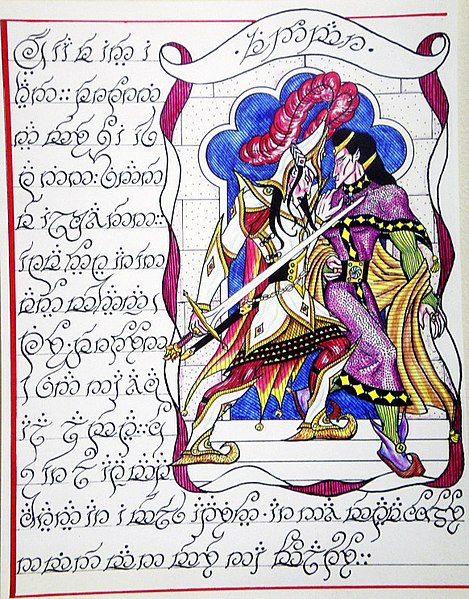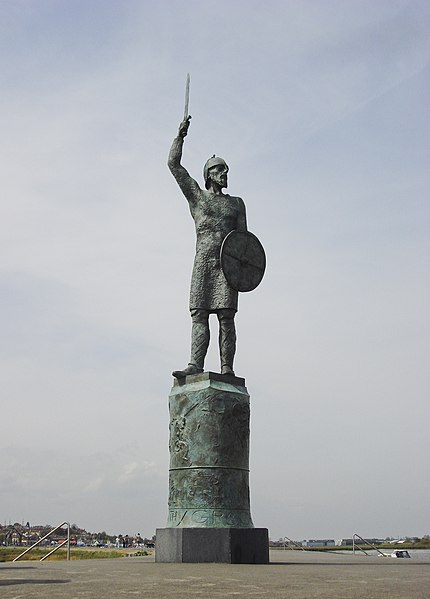Northern courage in Middle-earth
The medievalist and fantasy author J. R. R. Tolkien derived the characters, stories, places, and languages of Middle-earth from many sources. Among these are Norse mythology, which depicts a reckless bravery that Tolkien named Northern courage. For Tolkien, this was exemplified by the way the gods of Norse mythology knew they would die in the last battle, Ragnarök, but they went to fight anyway. He was influenced, too, by the Old English poems Beowulf and The Battle of Maldon, which both praise heroic courage. He hoped to construct a mythology for England, as little had survived from its pre-Christian mythology. Arguing that there had been a "fundamentally similar heroic temper" in England and Scandinavia, he fused elements from other northern European regions, both Norse and Celtic, with what he could find from England itself.
Ragnarök is one of the elements scholars have identified in The Lord of the Rings. Battle of the Doomed Gods by Friedrich Wilhelm Heine, 1882
"Great horns of the North wildly blowing": Tolkien's account of the arrival of the Riders of Rohan at the Battle of the Pelennor Fields, seen here in Peter Jackson's film The Return of the King, has been read as exemplifying the "heroic Northern world".
First Age Elves such as Fëanor (left) and Fingolfin expressed Northern courage in different ways. Artwork by Tom Loback, 2007
Byrhtnoth, prideful loser of the 991 Battle of Maldon
Luck and fate in Middle-earth
The lives of the characters in J. R. R. Tolkien's world of Middle-earth appear variously to be driven by luck or by fate. This is arranged in such a way that the characters' free will is never compromised; they must rely on their own courage, just like Old English heroes like Beowulf and figures from Norse mythology. The text of The Lord of the Rings, while never Christian on the surface, hints at the working of higher powers, which the cosmology in The Silmarillion presents as the angelic or godlike Valar, who in turn carry out the will of the creator, the one God Eru Ilúvatar.
Scholars have likened the Valar to Christian angels, intermediaries between the creator and the created world. Painting by Lorenzo Lippi, c. 1645





